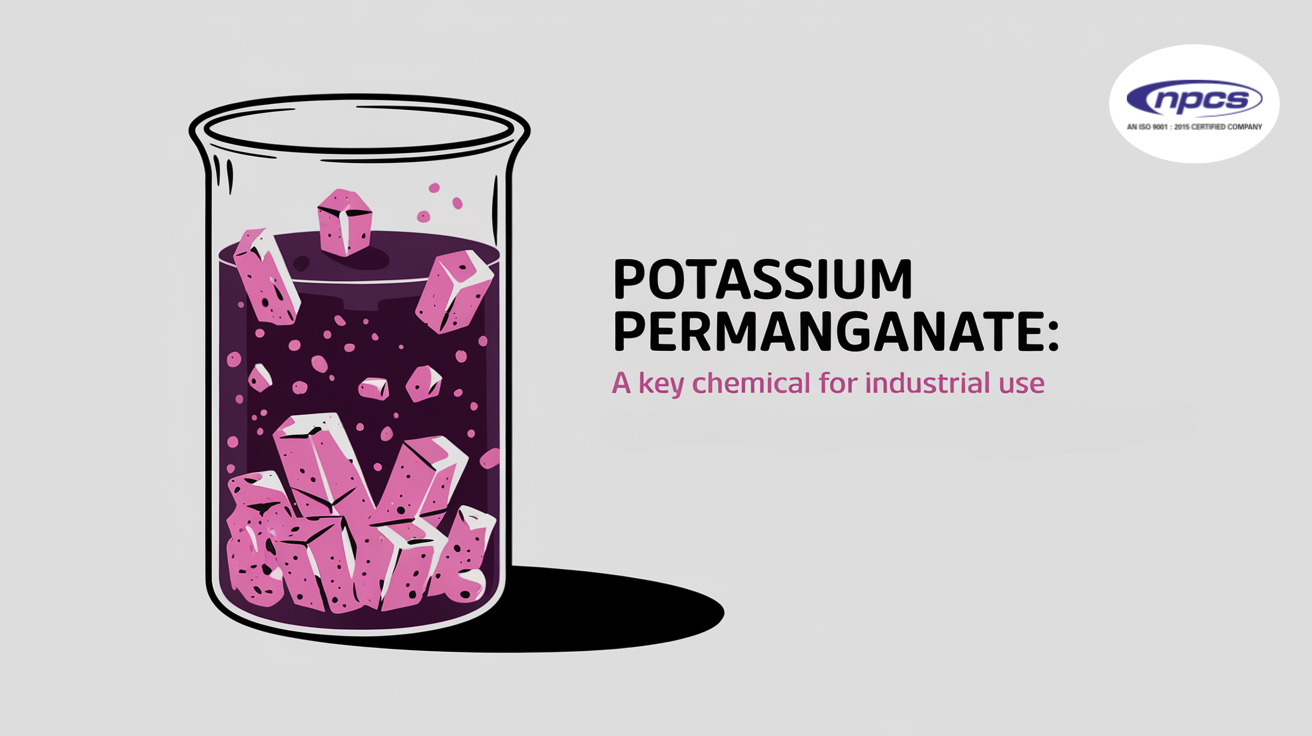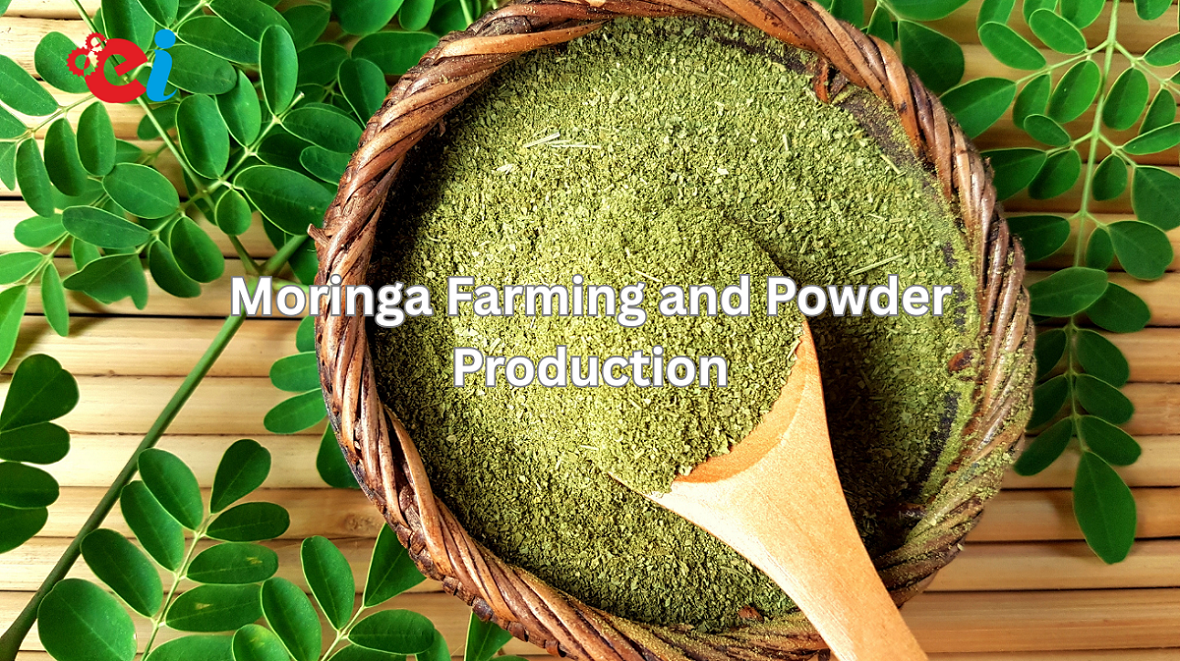Potassium Permanganate functions as an important versatile chemical that industries use widely. Its powerful oxidizing features, together with good stability and numerous industrial uses, continue to establish potassium permanganate as a critical compound in water treatment operations and pharmaceutical production, as well as textile manufacturing and chemical synthesis processes. This article examines the industrial importance of potassium permanganate from its manufacturing methods through its practical implementations in markets along with security guidelines.
Industrial Significance and Production
Potassium permanganate exists as a chemical compound that unites potassium with manganese and oxygen to form the structure. The chemical substance exists as a deep purple crystalline solid, while its water dissolution leads to an intense pink solution. The commercial industry manufactures potassium permanganate through MnO₂ manganese dioxide oxidation with KOH potassium hydroxide, followed by chlorine or potassium nitrate oxidation.
The potassium permanganate market worldwide exhibits a steady upward trend because industrial processes require its extensive utilization. Multiple industry experts predict that the market demand for potassium permanganate will expand by approximately 4.5% throughout the years 2023 to 2030. The market expands because water treatment facilities and the pharmaceutical industry show rising requirements.
Applications Across Industries
Water Treatment
Potassium permanganate serves as the main substance for water purification through its oxidizing properties. The powerful oxidizing capabilities of potassium permanganate enable the destruction of iron substances in addition to manganese and hydrogen sulfide compounds present in drinking water and wastewater. The control of biological contaminants and odor and taste management in water treatment facilities worldwide depends on potassium permanganate applications at treatment plants.
Research shows potassium permanganate acts as a crucial water treatment component by removing microbial contamination to almost complete levels within 99% efficiency. The chemical destroys organic material that lets zebra mussels multiply, thus acting as a vital tool to control their spread in water pipelines.
Read More About : The Successful Business of Potassium Permanganate
Pharmaceutical and Medical Applications
The pharmaceutical industry puts potassium permanganate to wide use because of its antimicrobial properties, which function both as antiseptic and disinfectant agents. This compound functions as an effective treatment for skin conditions that include eczema, dermatitis, and fungal infections. Medical research confirms that diluted potassium permanganate solutions minimize bacterial infections which improves healing in chronic wounds and ulcers.
The chemical synthesis of drugs relies on permanganate to conduct essential oxidation reactions for producing antibiotics together with organic compounds. The pharmaceutical industry expansion creates a persistently rising demand for superior-quality potassium permanganate.
Textile and Dye Industry
Potassium permanganate serves as a main bleaching and decolorizing component within textile manufacturing processes. Denim fabric processing requires potassium permanganate to achieve wear and fade effects, which preserve the fabric fibers. Manufacturers in the global textile market start to use potassium permanganate as an efficient oxidizer that maintains quality standards by eliminating harmful chemical agents during production.
Efforts to find environmentally friendly bleaching agents have strengthened the market potential of potassium permanganate within the textile sector. The application of potassium permanganate results in processing time decreases, which amount to a 30% reduction level, thus enhancing production efficiency.
Chemical Synthesis and Organic Oxidation
Organic chemistry strongly depends on potassium permanganate as an essential reagent for completing the synthesis of aldehydes ketones and carboxylic acids through oxidation reactions. Potassium permanganate stands out for its controlled oxidation properties, which make it the first selection for industrial chemical production.
Petrochemical operations use potassium permanganate to eliminate both hydrogen sulfide and various sulfur-based contaminants from hydrocarbon substances. The addition of potassium permanganate leads to improved petroleum product purity while maintaining their stability before distribution.
Agriculture and Soil Conditioning
Agricultural industries employ potassium permanganate to stop bacterial and fungal infections in agricultural crops. Potassium permanganate serves as a microbial reduction agent for fruits and vegetables before their harvest time. Research shows a 0.1% potassium permanganate solution effectively decreases post-harvest losses because it stops microbial growth.
Aquaculture personnel employ potassium permanganate as a control method to prevent fish diseases from parasites and bacteria, which results in better fish health and aquatic environmental conditions. Many industry professionals are adopting potassium permanganate as their choice of solution for fish farms because sustainable aquaculture production is becoming more and more important.
Market Trends and Economic Impact
The potassium permanganate market experiences three major driving factors, such as regulations aimed at protecting the environment, rising water purification, and scientific breakthroughs in pharmaceutical research. China and India lead the production of potassium permanganate among the three leading countries, which include North America and Europe as well as Asia-Pacific.
Market studies indicate the Asia-Pacific area consumes more than forty percent of total global potassium permanganate amounts as it experiences fast industrial growth and rigorous water treatment standards. The European market keeps expanding because of increasing sustainability demands in chemical applications and environmental protection activities.
Topical awareness about water pollution risks, together with health concerns, has made potassium permanganate the preferred solution over chlorine-based disinfectants. Market analysts anticipate that potassium permanganate sales will expand beyond USD 1.2 billion by 2030, which demonstrates its importance as an essential industrial chemical.
Safety and Handling Considerations
The general use of potassium permanganate demands proper safety measures because it acts as a potent oxidizing agent. The chemical reacts negatively with skin tissue during contact, and breathing its dust particles creates respiratory system problems. Employees must use protective equipment consisting of proper gloves and masks when operating with this chemical because safety measures remain vital for personal protection.
The regulations for potassium permanganate storage and transportation require obedience from industries. The storage of potassium permanganate requires dry, non-reactive containers set in areas that separate it from combustible materials for safety purposes. Organizations need to follow expert disposal procedures to reduce harmful effects on the environment.
Future Prospects and Innovations
The upcoming years show positive perspectives for potassium permanganate as scientists continue their work on developing better usage methods and safety measures. Science investigations show this compound could revolutionize both wastewater treatment and industrial cleaning through advanced oxidation processes of nanotechnology.
Scientists are developing new methods to control the release of potassium permanganate that will enhance its performance in agricultural and medical practices. Scientists continue conducting research to find sustainable production techniques that minimize the environmental impact during potassium permanganate production.
Conclusion
Modern industry continuously depends on potassium permanganate because this chemical finds broad application in water treatment alongside its uses for pharmaceuticals and textiles and farming operations. This chemical compound delivers essential benefits through its strong oxidizing properties and microbial-killing capabilities to industrial production applications. Research and technological progress, together with increasing market share, will improve the usability and safety of potassium, which will sustain its significance within the global chemical industry. The industrial application of potassium permanganate will stay pivotal because the market forecasts demonstrate an annual growth rate of more than 4.5%.







